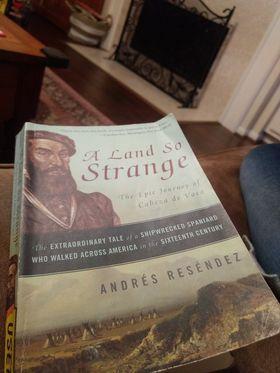One of the misconceptions of homeschooling is that one or both parents are doing ALL the teaching. Sometimes that’s true. But most of what homeschooling is about is the power and ability for the parent to pick and choose resources (including other teachers/tutors). As much as I love teaching history, this year history instruction became a duty I chose to share with another mom in our homeschooling group. The beauty of the heaviest portion of the kiddo’s history lessons being taught by someone else on a specific day is that it leaves me more time to read additional books that cover the same topics the kids are studying. The downside is, we’ve changed gears a little and are studying a different time frame than I initially planned. The good is outweighing the bad.
At home, we had cycled back through the American Revolution and I was pumping up to spend most of our spring semester on the Civil War. As we started the Fall semester, however, our “Early American History” course reset our timeline back to the Vikings and we kickstarted the year with Eric the Red and Norse Mythology to lay a foundation for the earliest known explorers and their encounters with the early Native Americans.
One of the fun things about studying history, is studying also the evolution of history, science, and mythology while you’re at it. We got to watch some neat documentaries on Norse Explorers and how for a long time people didn’t believe that Leif Ericson had ever actually touched North American soil, but archeology has a way of uncovering truth… and sometimes additional mysteries. As students of history, our job is to remember that education is a lifetime pursuit and keep digging (sometimes literally) for answers.
During the first half of this semester we also studied the Spanish explorers. Naturally, we covered Amerigo Vescpucci (I read Felipe Fernández-Armesto‘s biography earlier this year and loved it) and Columbus, of course. Kiddo did a presentation on Vasco Nuñez de Balboa after reading multiple books about explorers and conquest. While she was preparing her speech (my husband helped her wrap her horseback riding helmet in foil so we could add a plume and make it conquistador armor for visual aid upon her head), I read up on Cabeza de Vaca.

A Land So Strange: The Epic Journey of Cabeza de Vaca has been on my shelf for awhile now. I knew I wanted to read it, I just wasn’t sure when. I’d read his journals before, and when reading Reséndez’s chronicle of the journey, I realized I actually had two copies of the source document. The copies of Cabeza de Vaca’s journals I have are at least different publishers, so I don’t feel entirely ridiculous. I do enjoy perusing annotations and notes in addition to devouring primary sources.
Álvar Núñez Cabeza de Vaca (and yes, his family name was Cow’s Head, due to a his ancestor placing a cow skull in a strategic place during a battle against the Moors) is considered the first historian of Texas by some. A journey to explore Florida quickly became a survival story full of starvation, slavery, building Native American relations, and faith healings.
I gave Reséndez’s book four stars on Goodreads when I logged it as read. It’s fascinating stuff, but I did find it a tad too easy to set down. It’s definitely an account worth having on any armchair historian’s shelf, though, and I will definitely hold onto my copy.

After that I jumped into The Riddle of the Compass: The Invention that Changed the World. I put Amir D. Aczel’s work on par with Dava Sobel’s and would happily hand this amusing piece of scientific history in the hands of any upper middle to early high school student. It reads a bit like a memoir of discovery as Aczel traipses around Europe trying to uncover who actually invented the compass and reveals some “truths” to be delightful legends and fabrication. Realistically, I wouldn’t call this book scholarly, and it has some poor reviews where people have lamented that fact, but I did find it great fun and would have gladly participated in this research adventure pre-publication. I secretly just want to chat up old Italian men in dank out of the way libraries. Reliving Aczel’s research trip would be a fabulous vacation, because, after all, our education is a lifetime pursuit and also our favorite past-time.
